Arita is the birthplace of Japanese porcelain. See where it all started at Izumiyama Quarry and learn about porcelain history at Kyushu Ceramic Museum. While you are there, browse the ceramic shops, and visit the Zwinger Palace at Arita Porcelain Park.
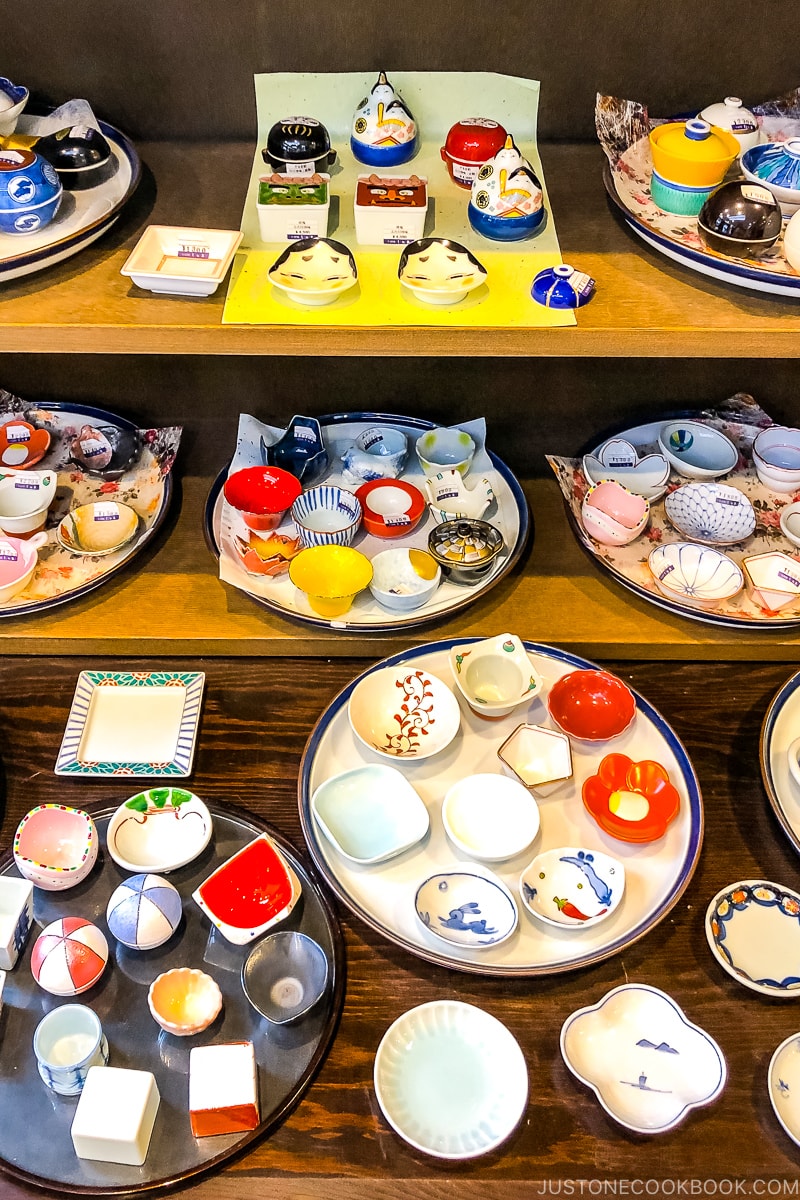
Arita ware (有田焼) is well known throughout the pottery world for its refined characteristics and colors. It all started 400 years ago when Yi Sam-Pyeong discovered kaolin at Izumiyama Quarry in Arita. We spent a day discovering various sites around Arita and shopped for ceramic and porcelain to add to our kitchen collection. Ready to join us? Let’s go!
Where is Arita Japan
Arita is located in northwest Kyushu (Saga Prefecture) just south of Imari. If you are taking public transportation, you want to go to Arita Station on Sasebo Line. To save time, a taxi ride is the best way to go around the city. Walking is feasible but you won’t be able to fit in as many places to see.
What to Do in Arita Japan
We recommend spending an entire day in Arita during your visit. Compared to Okawachiyama Village, there are many more activities to do besides porcelain shopping. We’ll share them going from the east side of the city to the west. With each place below, we’ll share a brief description of our experiences. For detailed information for each location, we’ve tried our best to link them to the official sites.
Things to do in Arita include:
- Izumiyama Quarry
- Porcelain shop street, Tozan Shrine, Aritatoji Museum. and Tombai Wall Alleys
- The Kyushu Ceramic Museum
- Arita Sera shops
- Arita Porcelain Park
- Nakao Uwa Climbing Kiln
Izumiyama Quarry
The rise of Arita ware all began from the high-quality kaolin found by Yi Sam-Pyeong (aka Risanpei) at Izumiyama Quarry. The quarry is now classified as a national historical site that opens for visitors.
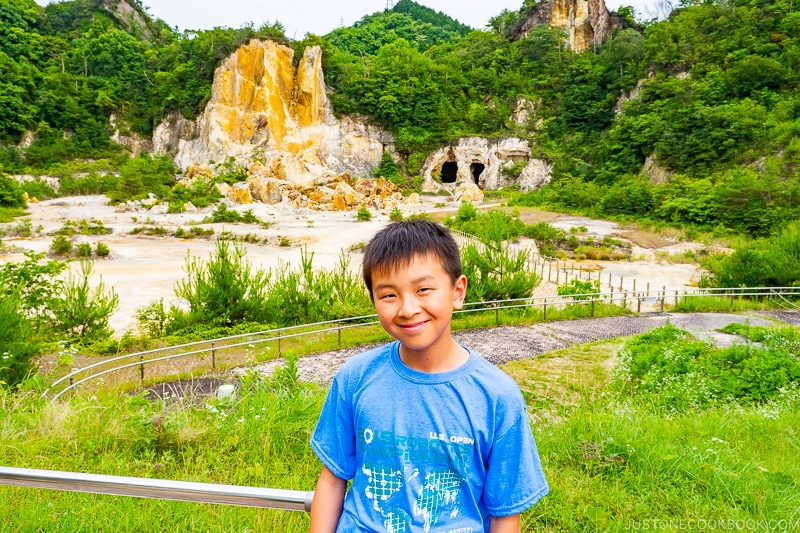
The quarry is fenced off so no entry allowed into the mines. However, there are several observation decks where you can see remnants of the mine. Looking at the size of the quarry, we can imagine during the heyday the amount of activities and of people that were working here.
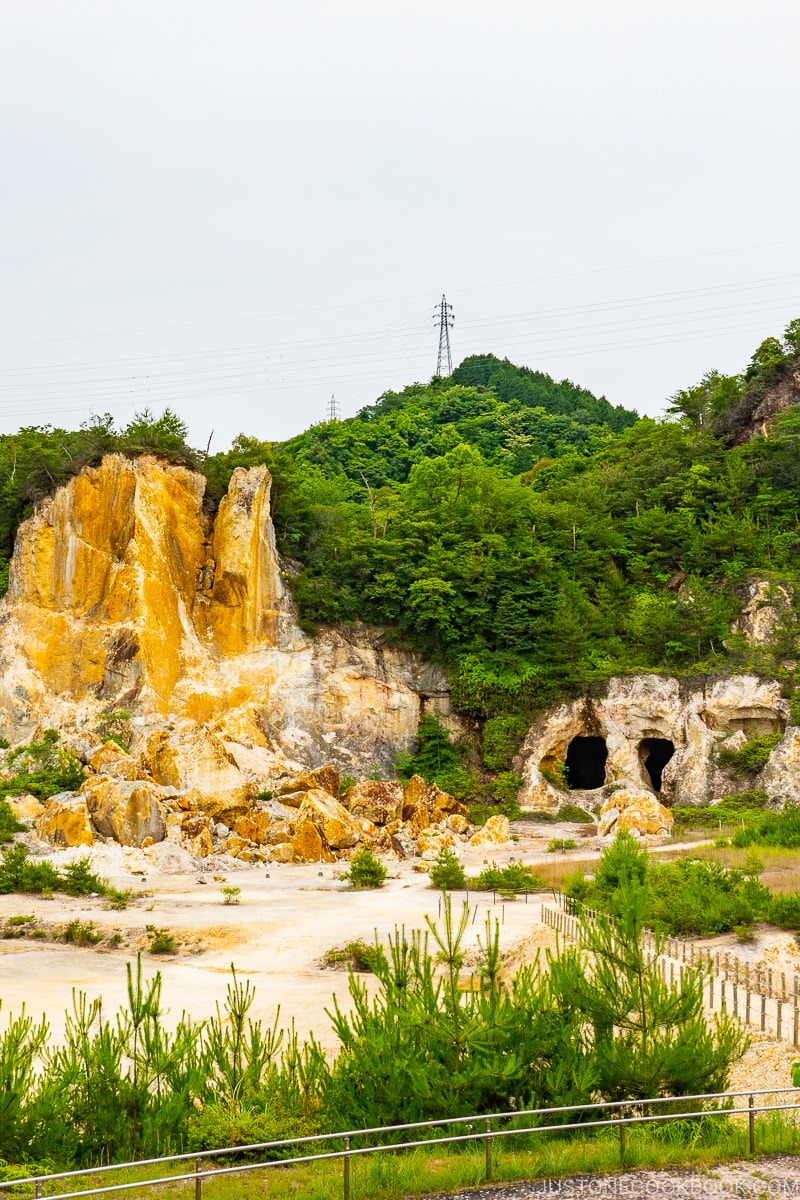
Arita Uchiyama Porcelain and Ceramic Shops 有田内山地区
Head west 10 min by foot and you’ll start seeing about 25 porcelain and ceramic shops that dot the streets in Arita Uchiyama. If you are looking for unique porcelain pieces to collect, these shops are a good place to start.
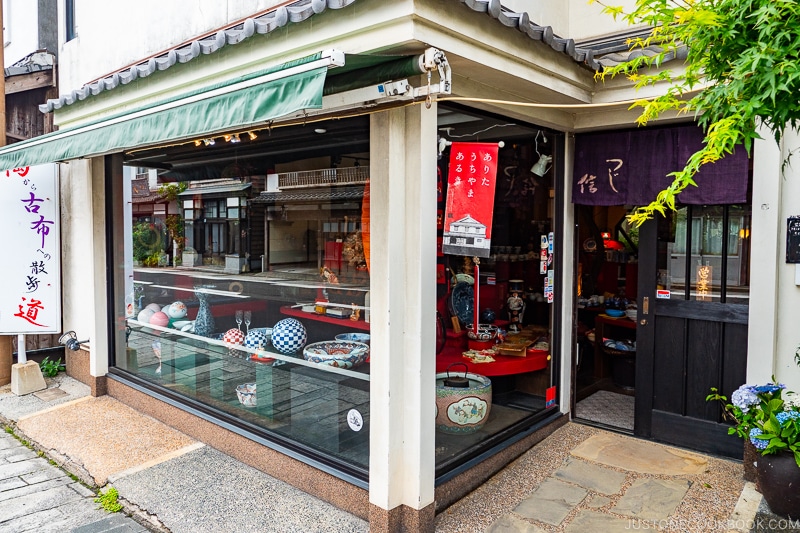
Many of the shops on the street are considered cultural-historic buildings and retained their traditional exterior.
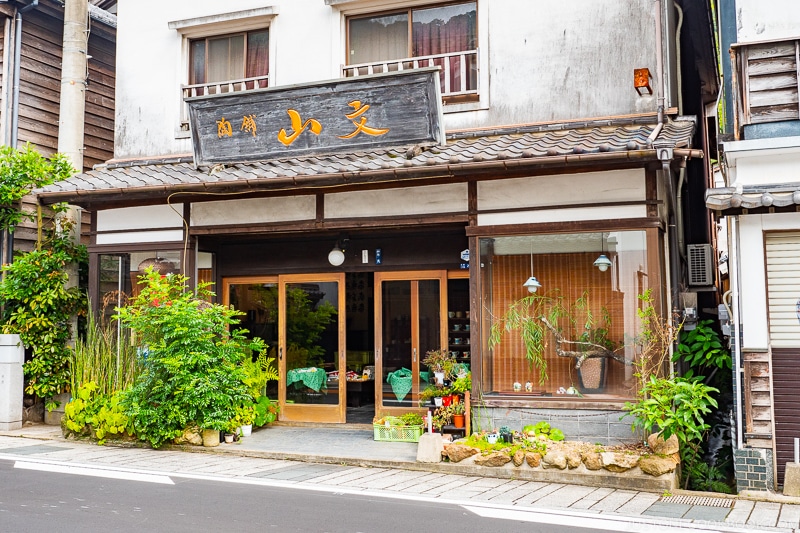
Tombai Wall Alleys
Just a block north from the main street is the Tombai Wall Alleys. These walls were made with firebrick from the kilns, broken pottery pieces, and red clay.
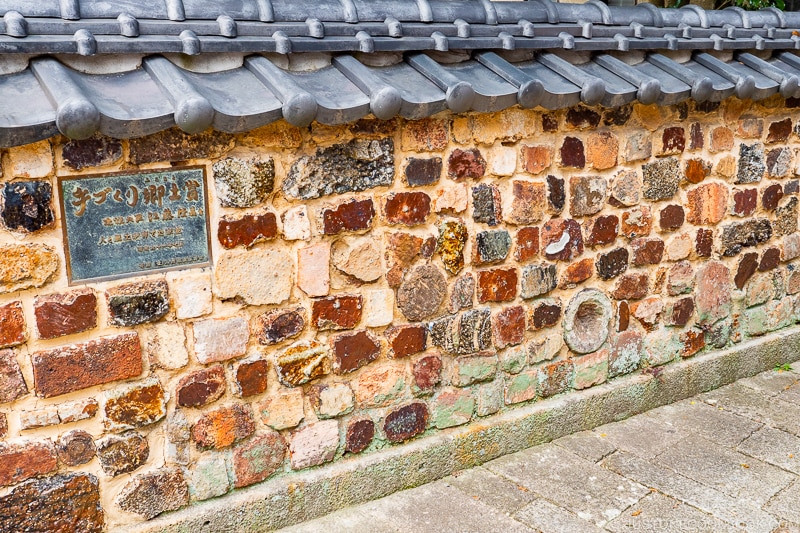
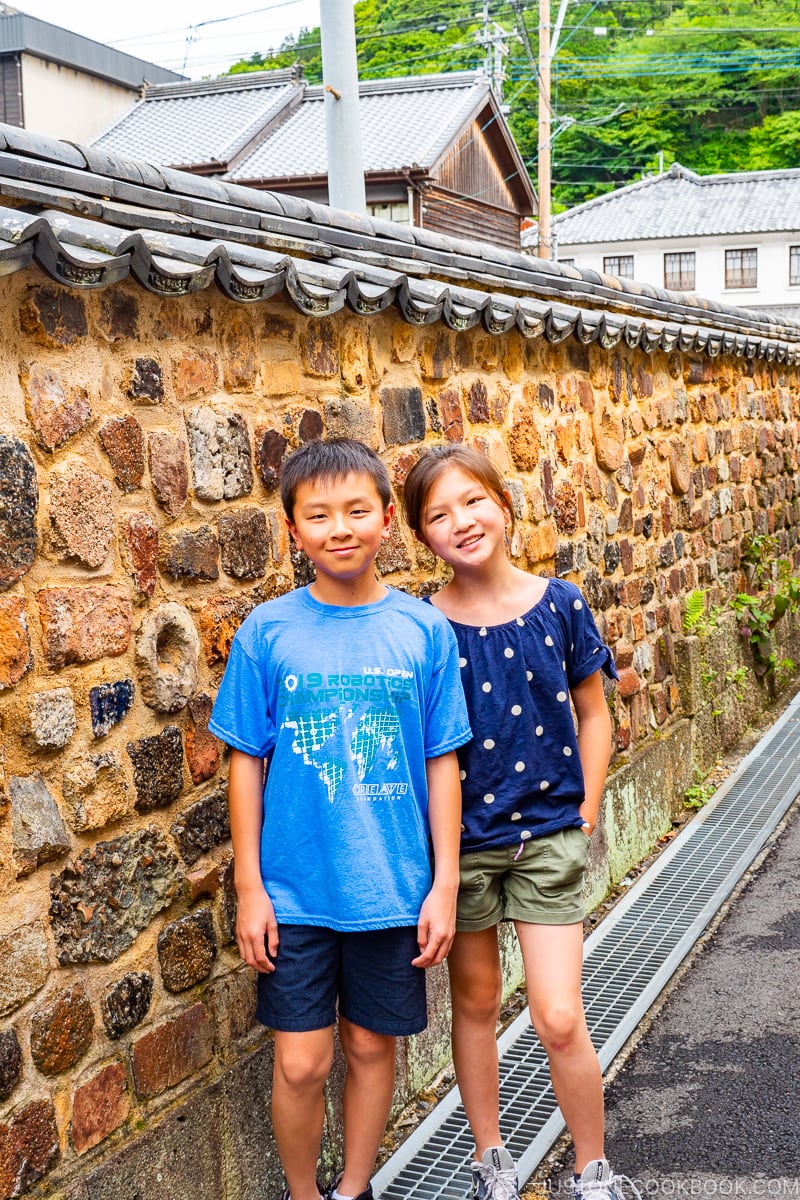
Aritatoji Museum 有田陶磁美術館
There’s a small Arita porcelain museum called Aritatoji Museum in the area but if you are short on time, you can skip it and plan for Kyushu Ceramic Museum.
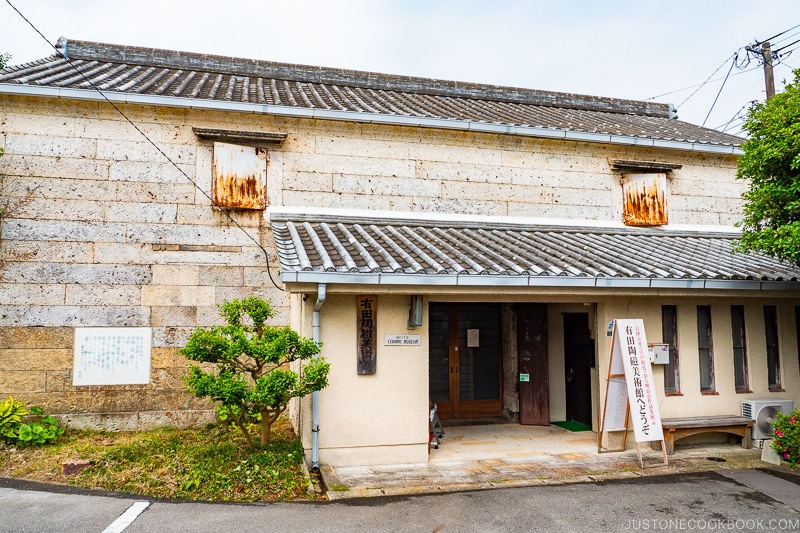
Aritatoji Museum has been open since 1954 and there’s a replica Edo period pottery workshop inside. The main features of the museum are the collection of historical ceramics and porcelains on display.
Tozan Shrine
Make a quick stop at Tozan Shrine (aka Sueyama Jinja) nearby. It is a Shinto shrine found in 1658 dedicated to the fathers of pottery. Tozan Shrine is quite unique as many of the shrine’s features are made from porcelain. These include the torii gate, lamps, guard dogs, and the water basin.
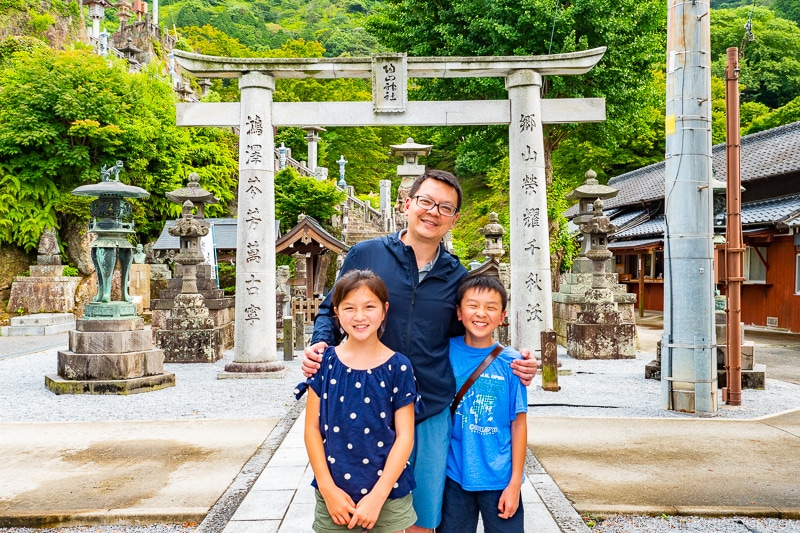
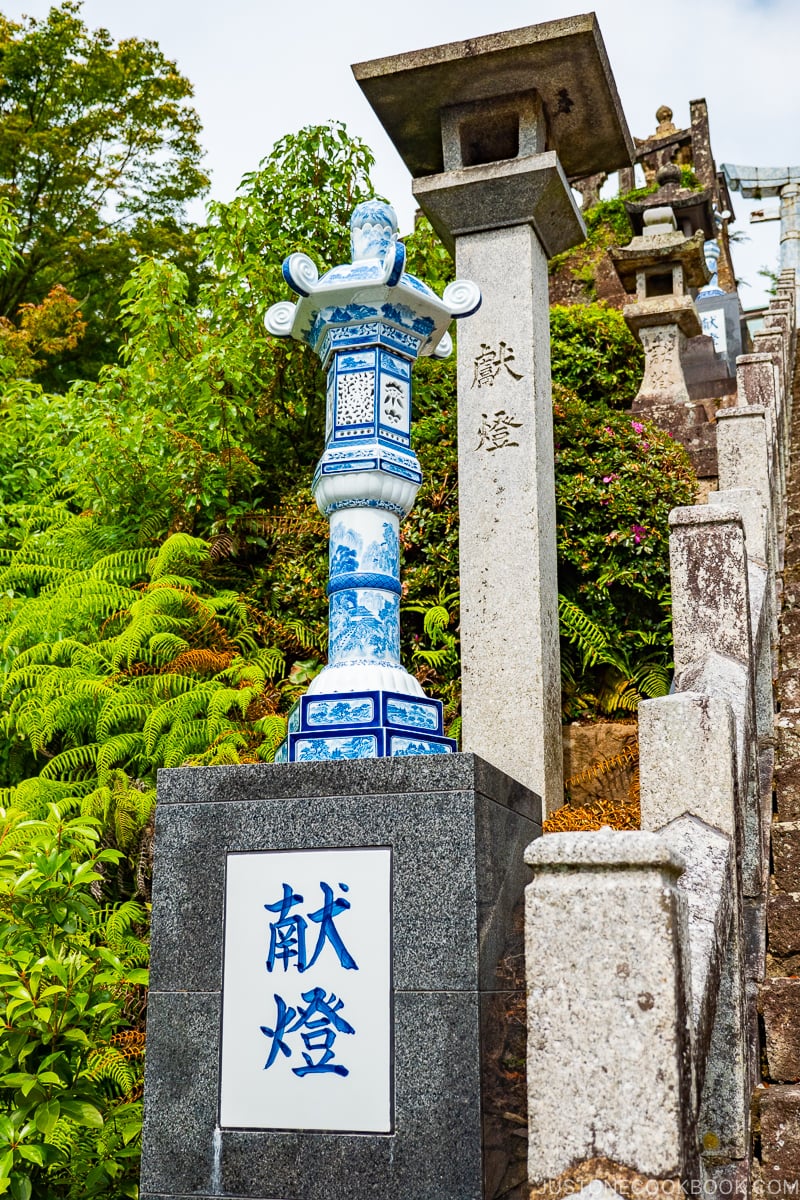
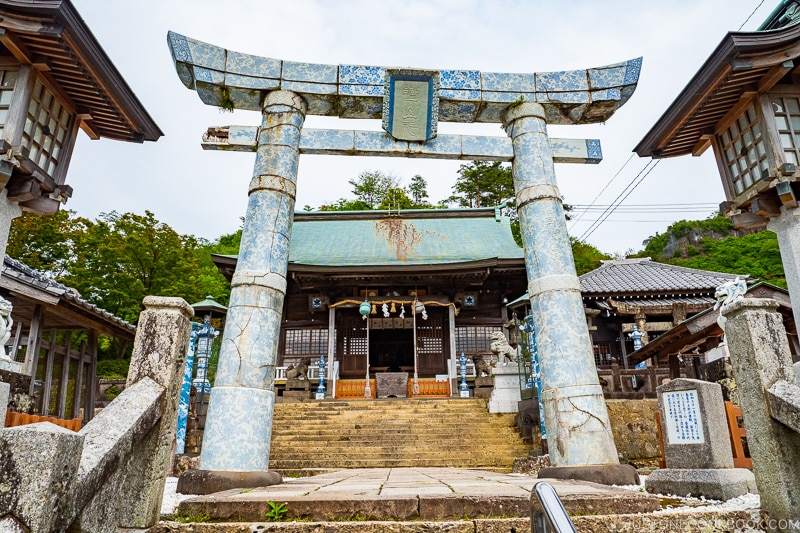
You can purchase lucky charms and souvenirs made from Arita porcelain at the shrine. They are typically made from wood.
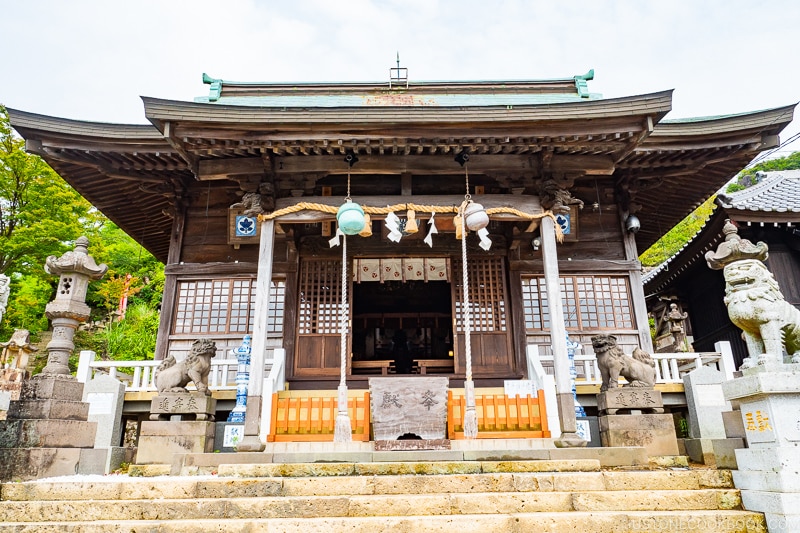
Tozan Shrine is dedicated to Emperor Ojin and Yi Sam-Pyeong, the father of Arita porcelain.
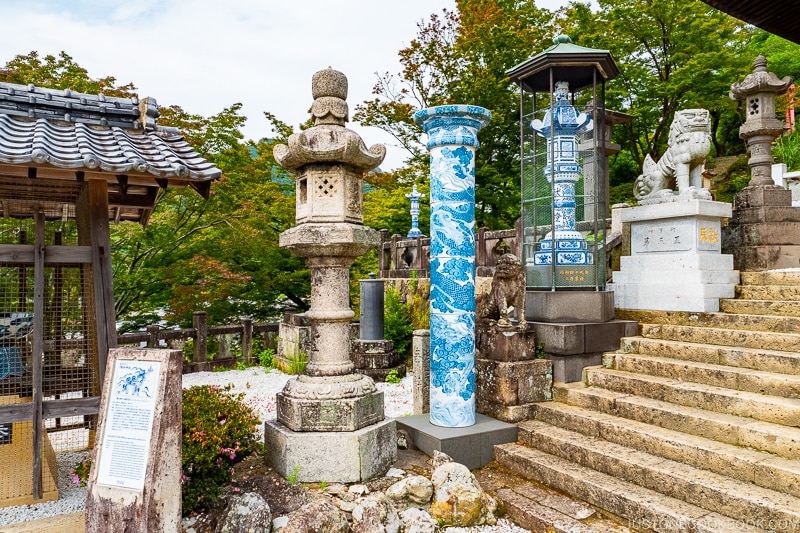
Kyushu Ceramics Museum 九州陶磁文化館
Take a taxi and you’ll arrive at the Kyushu Ceramic Museum in less than 10 min (~30 min walking). This is the largest ceramic museum in the area so plan on spending at least 1.5 – 2 hours to walk through.
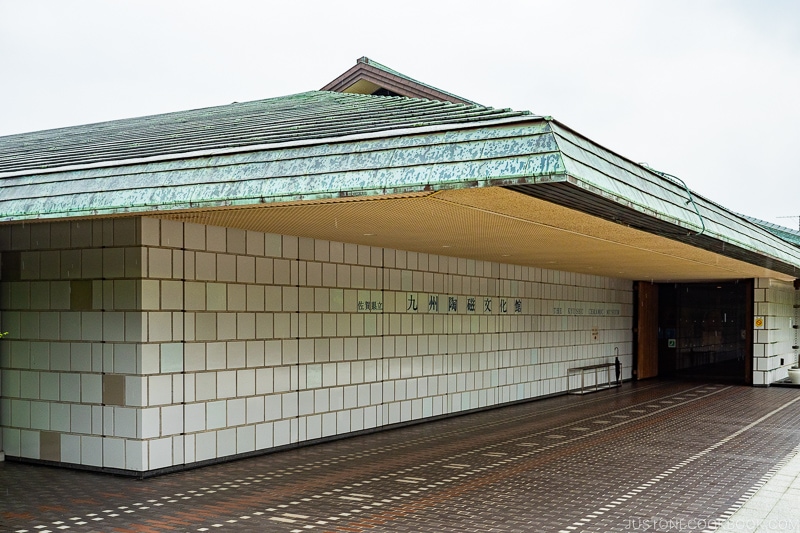
The museum houses an impressive collection of both modern ceramic and masterpieces from the past. Compared to the ceramics you see in the store, the pieces on display tend to be much larger and the decorations more intricate.
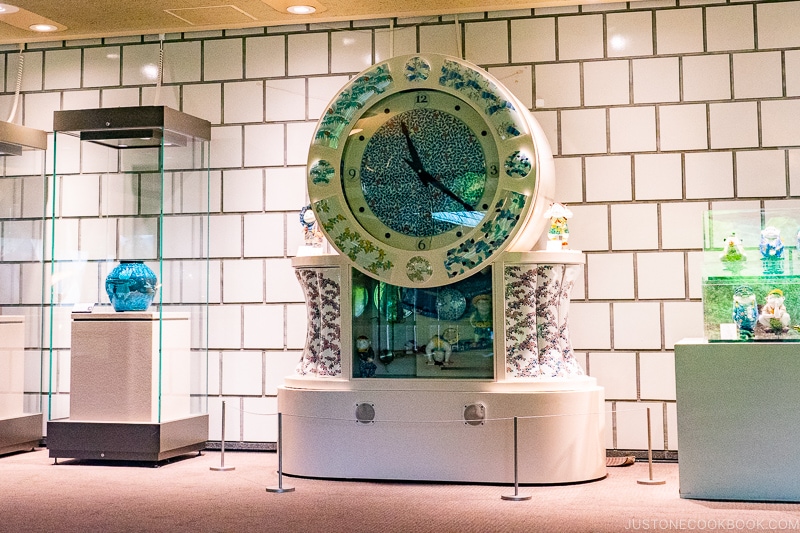
There are five exhibition rooms in the museum:
- General exhibition room – closed during our visit
- Contemporary Ceramics of Art of Kyushu – showcase elaborate pieces by celebrated ceramic artists
- Old Ceramics of Kyushu – ancient ceramics produced throughout Kyushu including examples of different styles
- History of Kyushu Ceramics – learn about the history of Kyushu ceramics and how it’s changed through time
- Shibata Collection – private collection donated to the museum from Shibata family
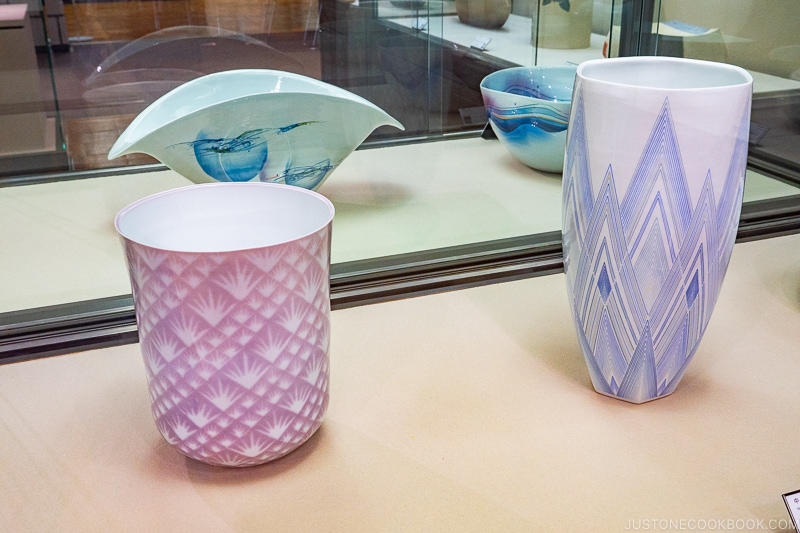
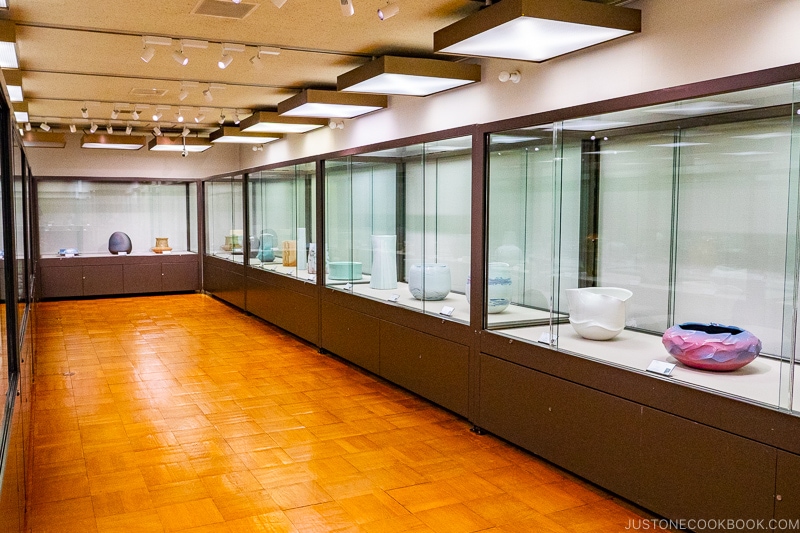
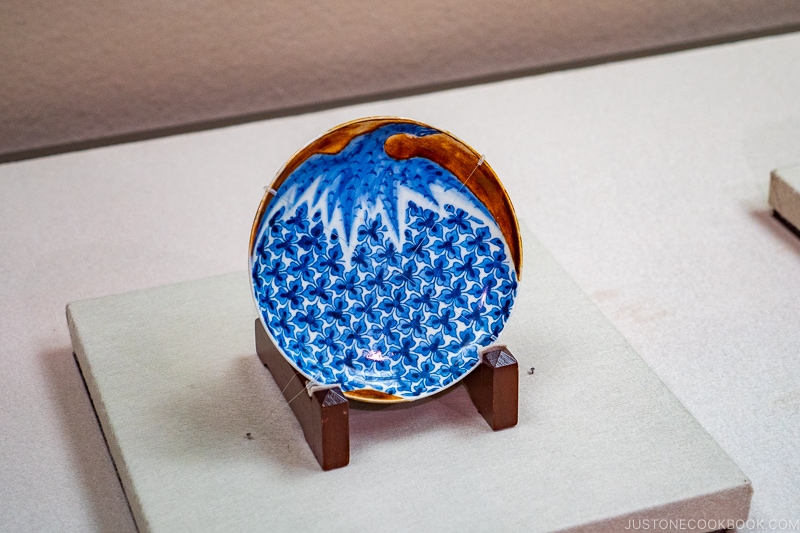
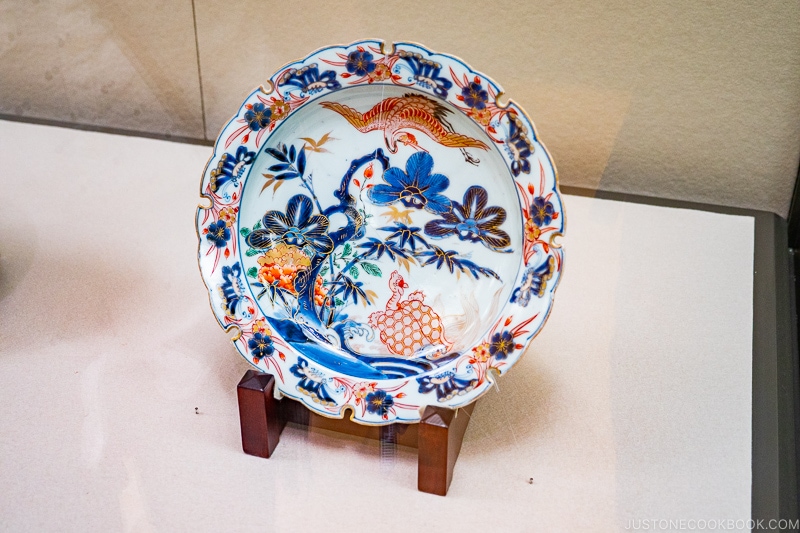
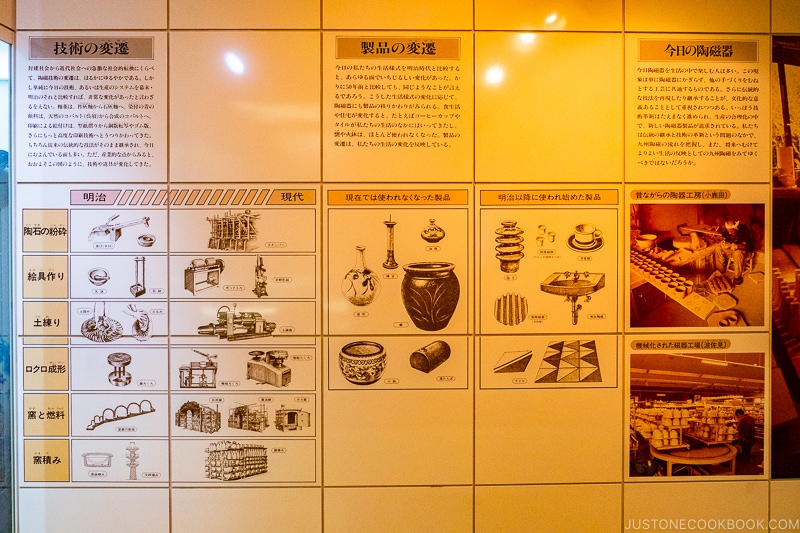
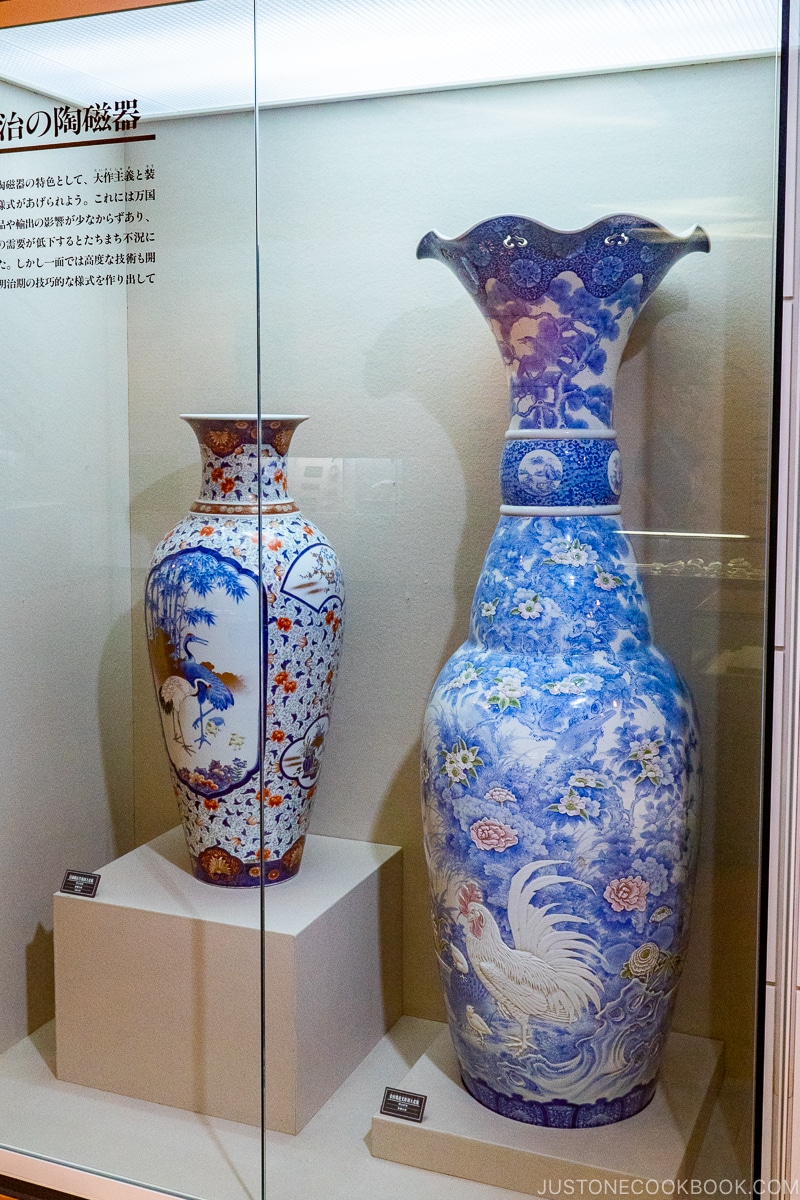
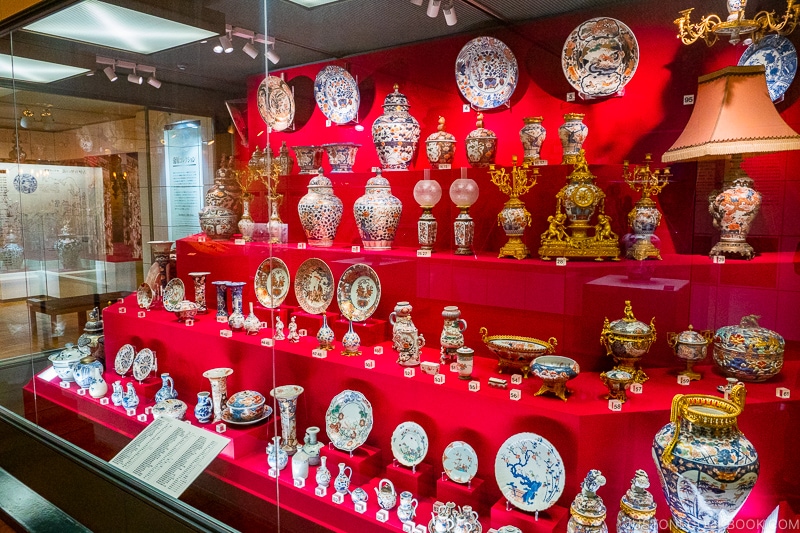
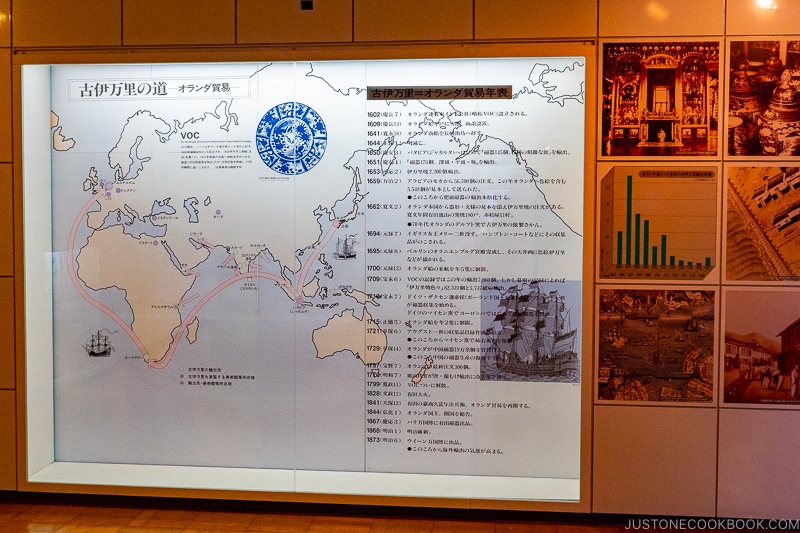
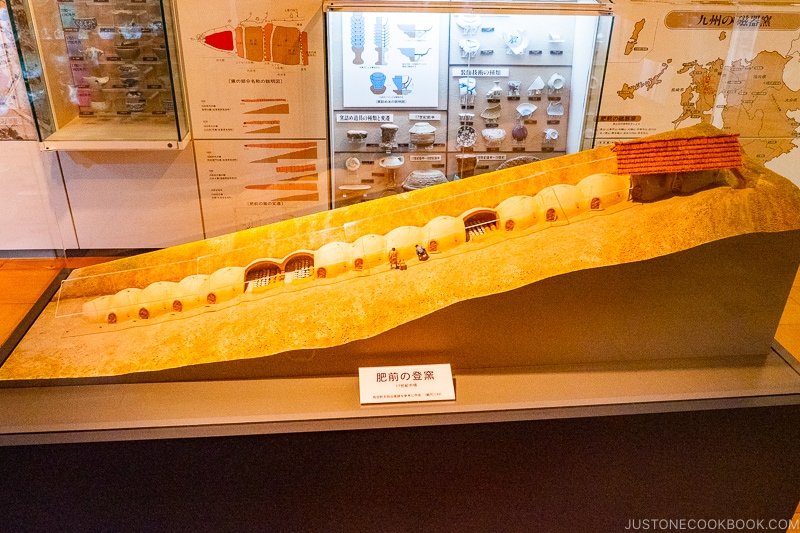
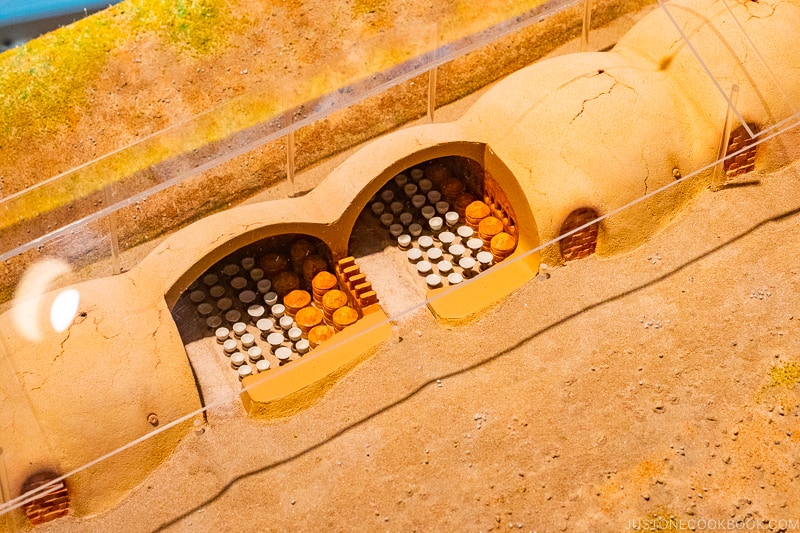
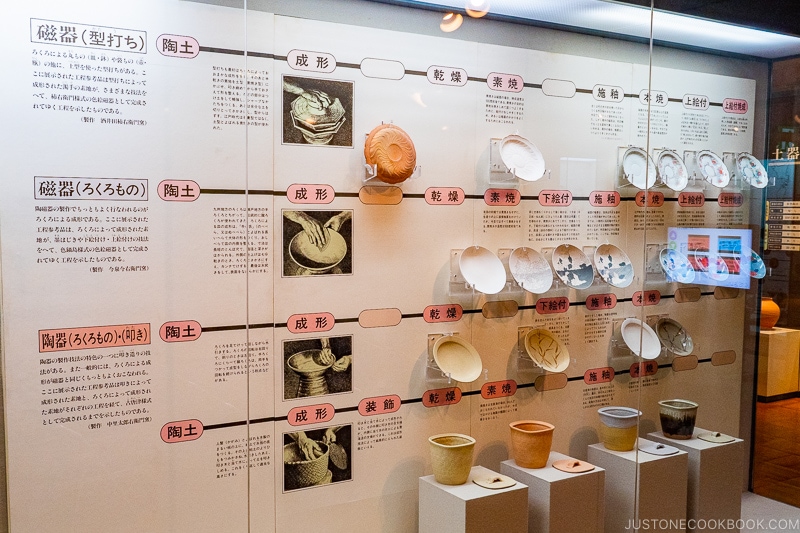
Kyushu Ceramic Museum is top-notch and you’d want to have it at the top of your list when visiting Arita.
Arita Sera アリタセラ
After learning all about porcelain, it’s time to buy some of your own to take home. When we were walking around the ceramic shops near Tombai Wall Alleys, not all the shops were open. We were confused as to why the city where Japanese porcelain was born had so few porcelain shops until we arrived at Arita Sera.
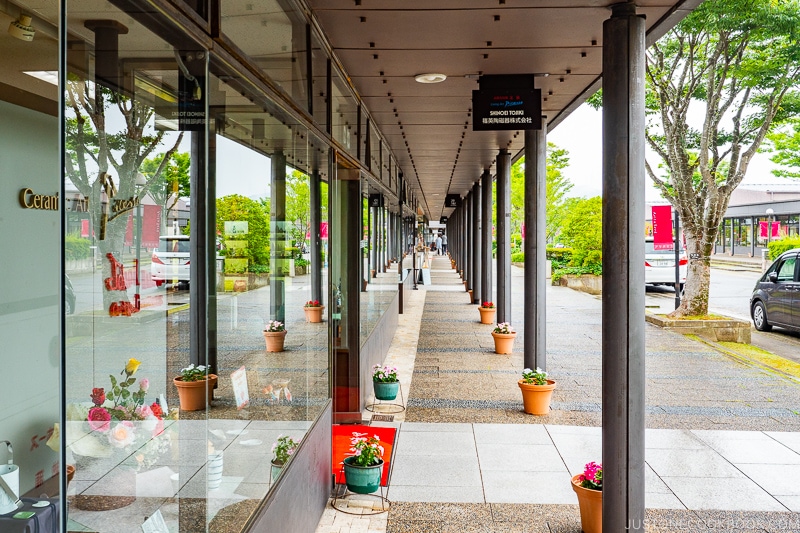
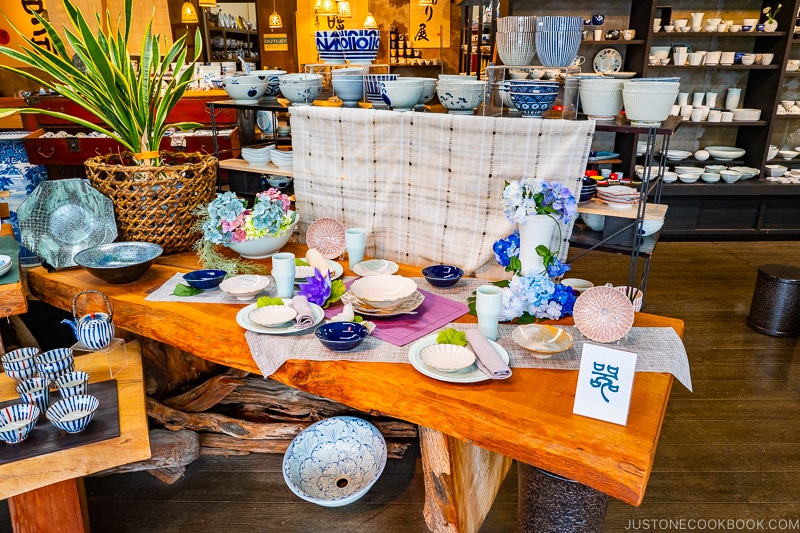
Arita Sera is a shopping complex not far from the Kyushu Ceramic Museum and it has 22 ceramic stores specializing in Arita ware. The stores there gear toward tourists and the staff are friendly.
The products in these stores are mostly mass-produced and at lower prices compared to the boutique shops at Okawachiyama Village.
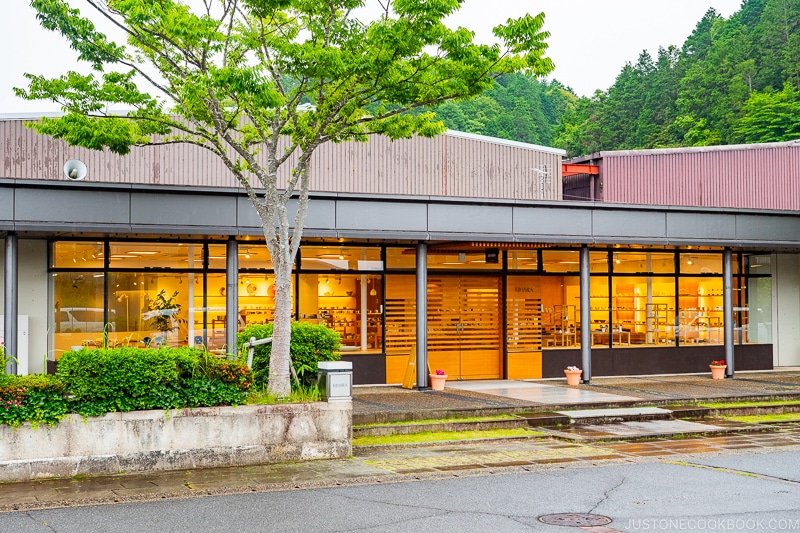
There are traditional-style Arita ware as well as modern tableware offerings such as beer glass or chawanmushi bowls.
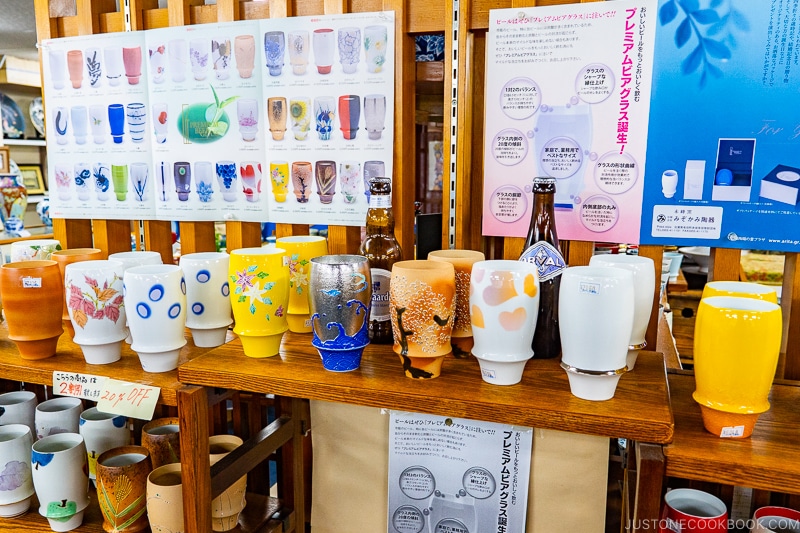
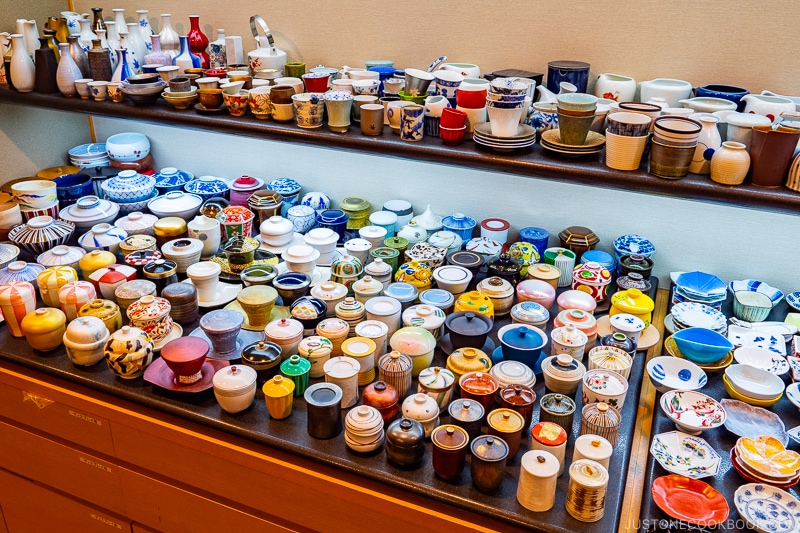
The pieces on display here are similar to the Arita ware you can find in Japanese department stores. We ended up not buying too many tableware here for props. However, we did go treasure hunting at one of the stores.
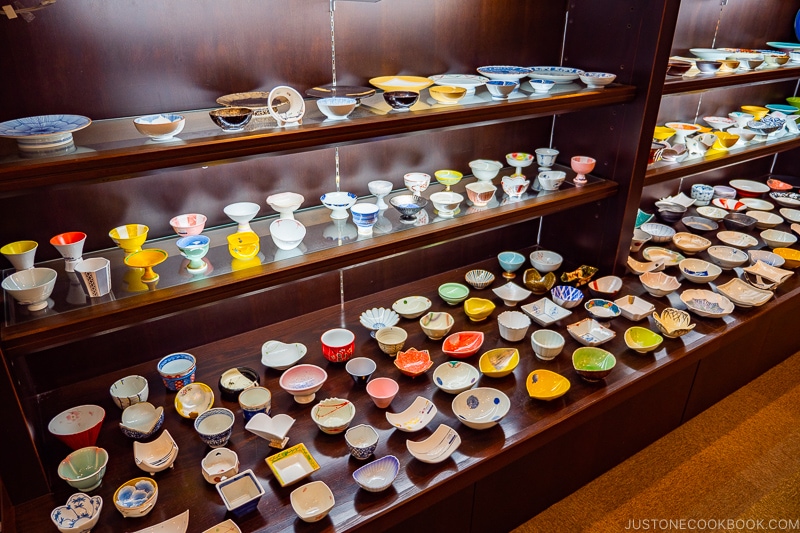
What’s treasure hunting? For 10,000 yen, the staff takes you upstairs to a warehouse area that is rather dusty (no photos). You have 30 min to fill a basket with as much ceramic as you can. You’ll also have to wrap the ceramic yourself.
Was it worth it? It was fun but we wouldn’t recommend it. The pieces available in the treasure hunt were disorganized and not as appealing. If you are interested in treasure hunting porcelain, consider Kouraku Kiln Tokunaga Ceramics which offers a similar experience and it received good reviews.
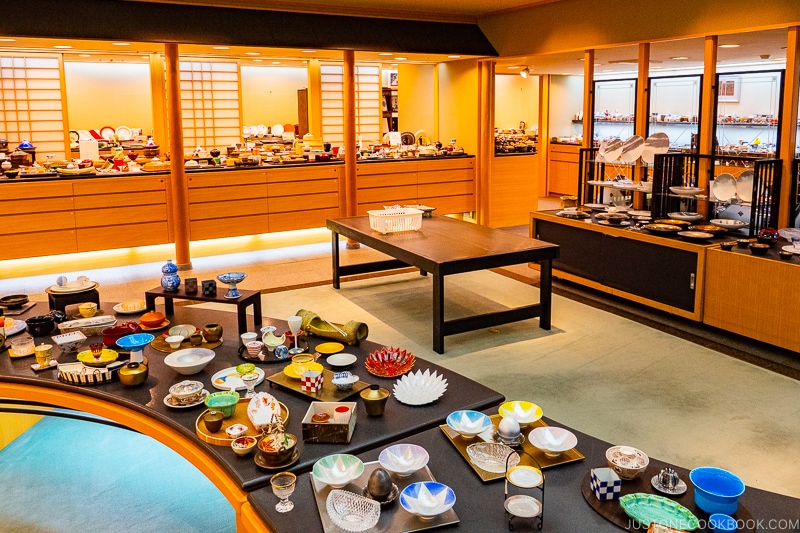
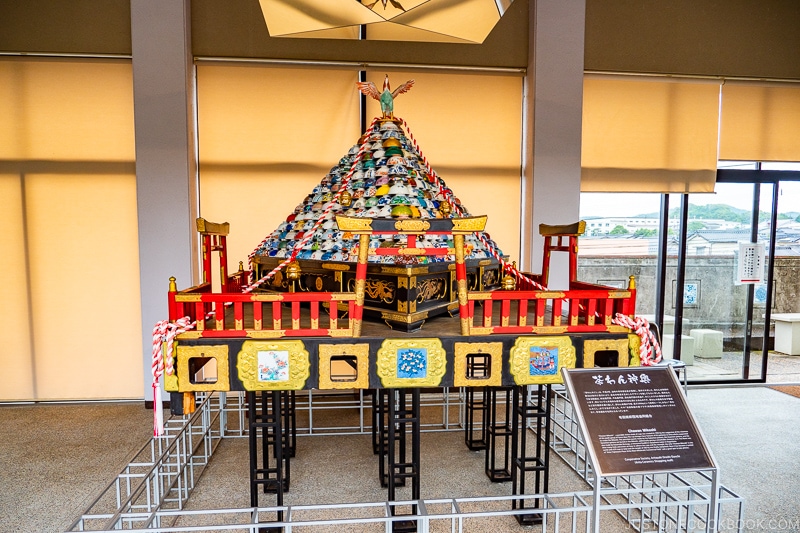
Arita Porcelain Park 有田ポーセリンパーク
If you have more time in Arita, make a stop at Arita Porcelain Park. It’s a porcelain theme park and free to enter. The signature building at the park is the replica Zwinger Palace (the original one is in Dresden Germany).
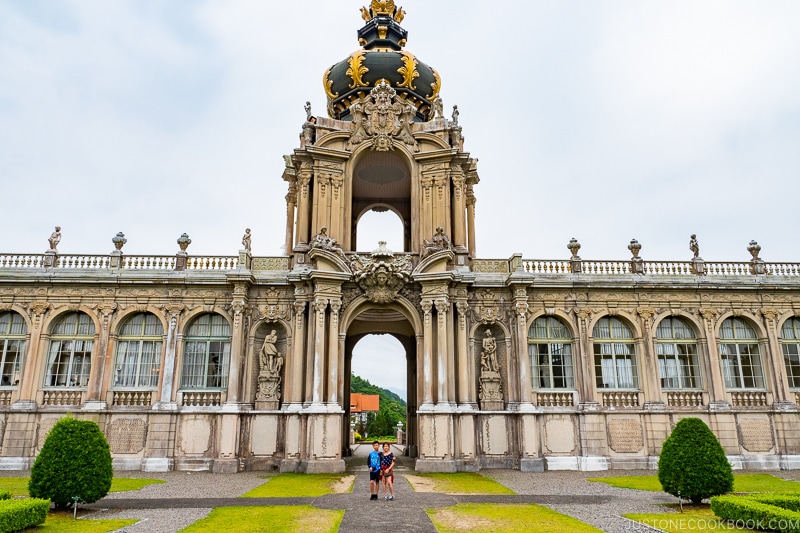
The theme park covers a large area and besides the Zwinger Palace, the attractions include:
- Arita ware shops
- Porcelain workshop (90 min)
- History museum
- Climbing kiln
- Baroque garden
There’s a sake brewery on site but it’s not related to ceramics or porcelain.
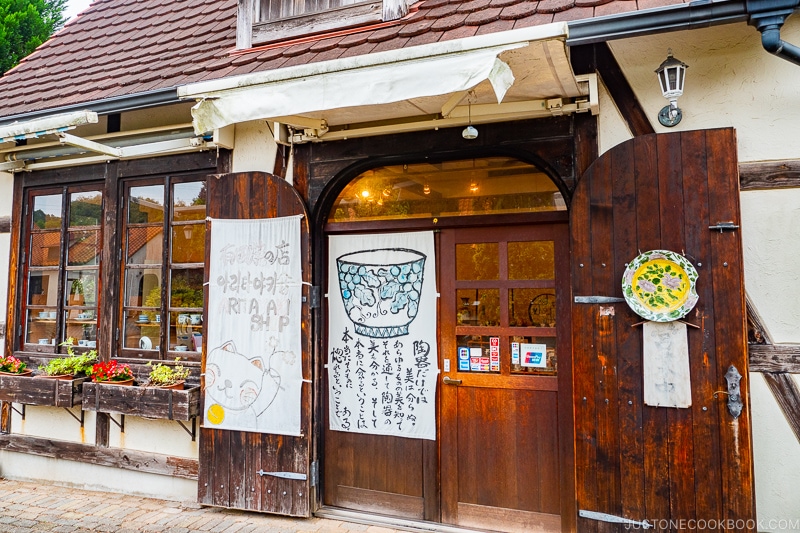
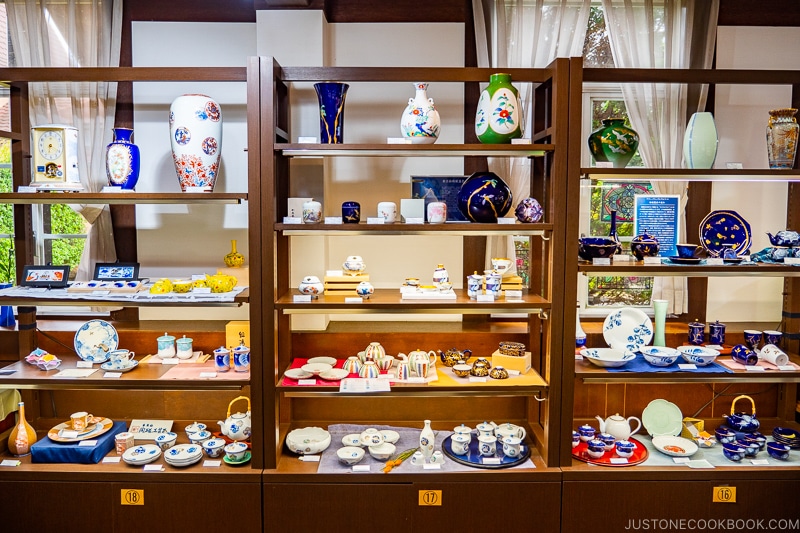
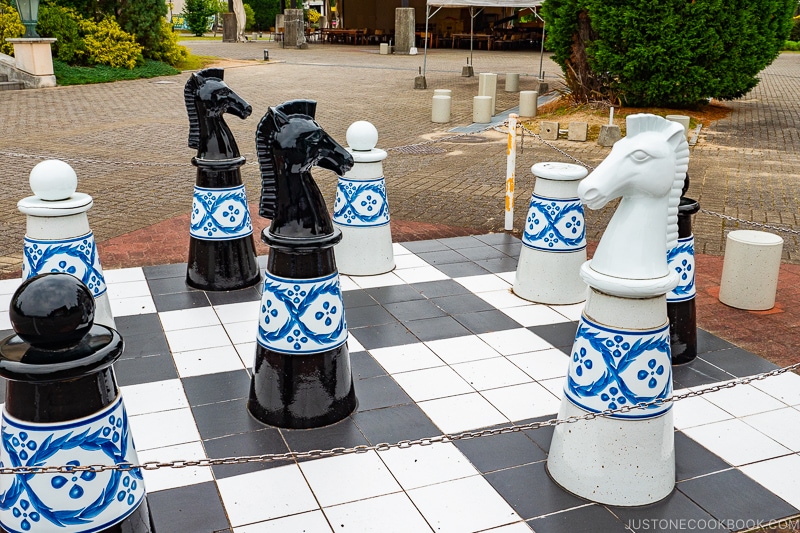
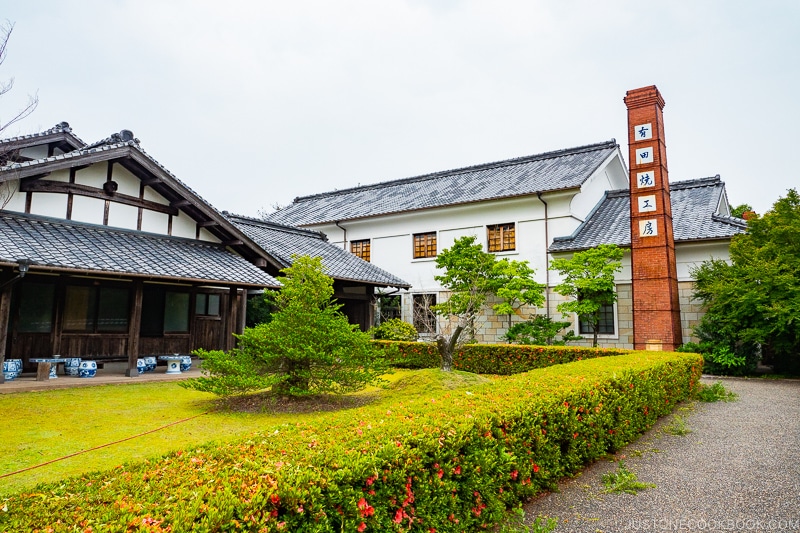
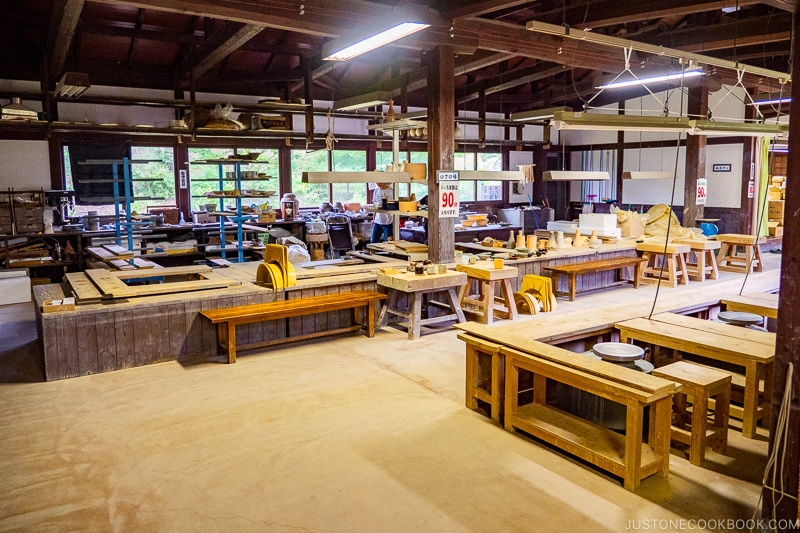
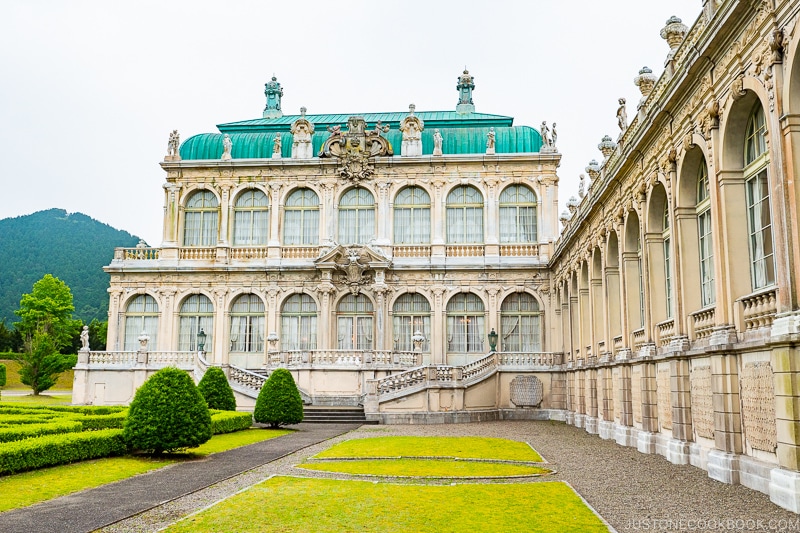
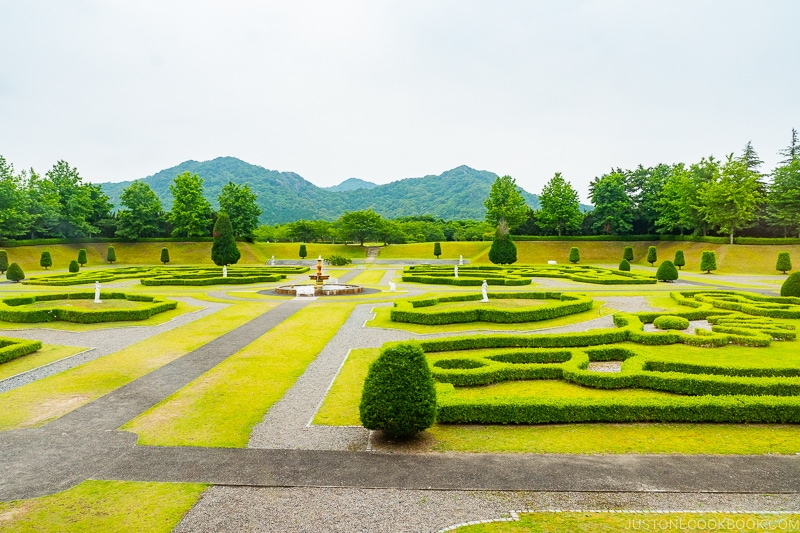
Would we recommend Arita Porcelain Park to visitors? The Zwinger Palace is really cool with a porcelain museum inside for visitors, but the theme park feels artificial and is mostly a tourist trap. You won’t be missing much if you can’t make it there.
Nakao Uwa Climbing Kiln 中尾上登窯跡
Our last stop is Nakao Uwa Climbing Kiln and it’s a bit out of the way. However, we had our own car so it was easier to get around. We wanted to stop by because Nakao Uwa climbing kiln was one of the world’s largest kilns (first built in 1600). The length of the kiln is over 160 meters long.
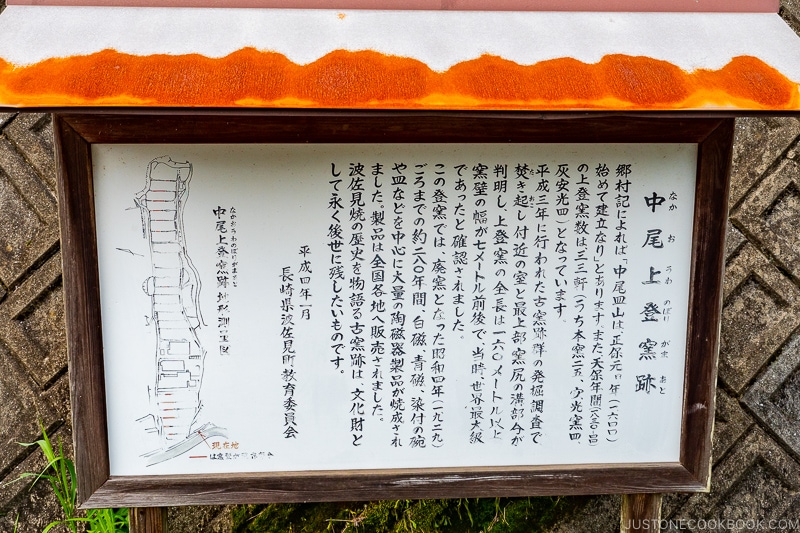
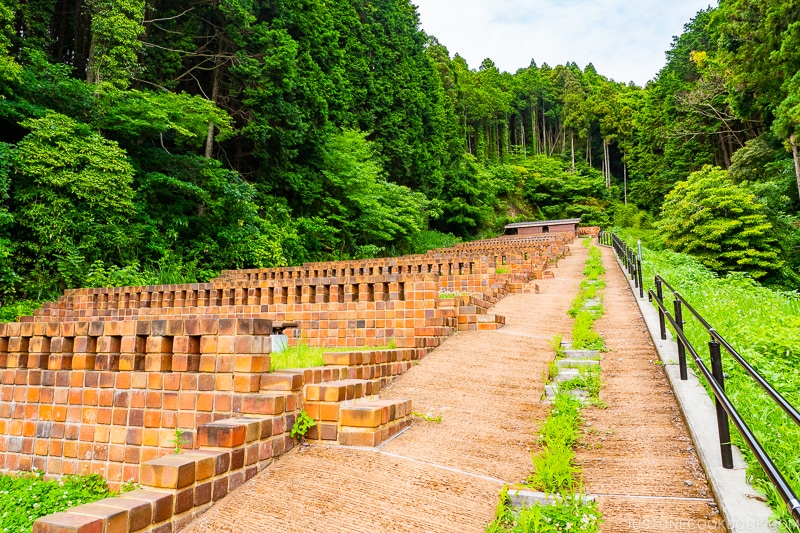
The kiln is located on top of a hill and overlooks the town of Hasami. Hasami has been producing porcelain for 400 years (Hasami ware) but is not as well known as Arita or Imari.
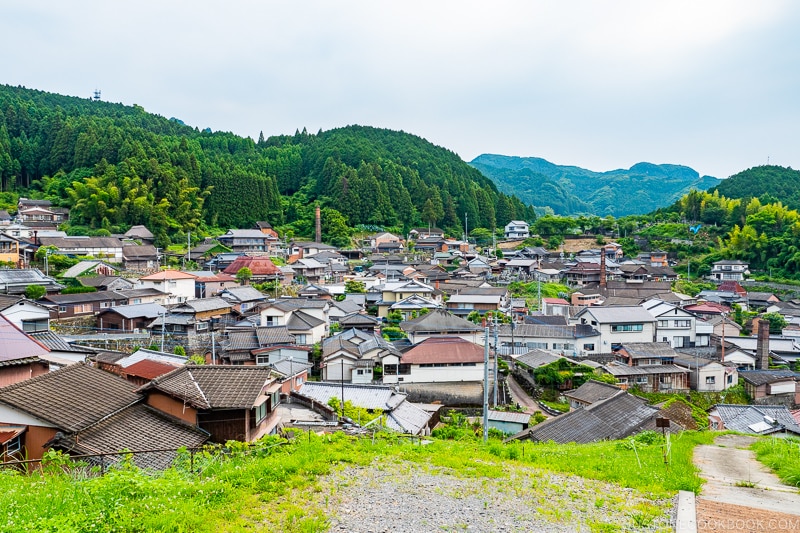
Our family enjoyed our visit to Arita and learning about the birthplace and history of porcelain in Japan. We also came here with the goal of finding unique tableware for our photoshoot and the mission was accomplished.
As I mentioned in Okawachiyama Village post, if you are looking for Japanese porcelain in Tokyo, stop by Tokyo’s Kappabashi Kitchenware Town. It’s the street dedicated to everything you’ll need for the kitchen!
Up next, we’ll share where we stayed and what other interesting places to visit in the area. See our other Kyushu guides here.

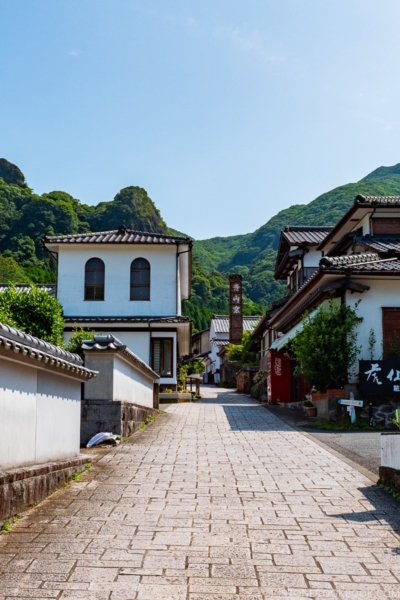

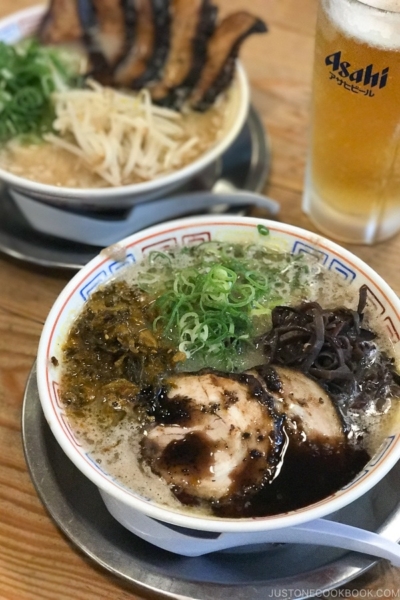
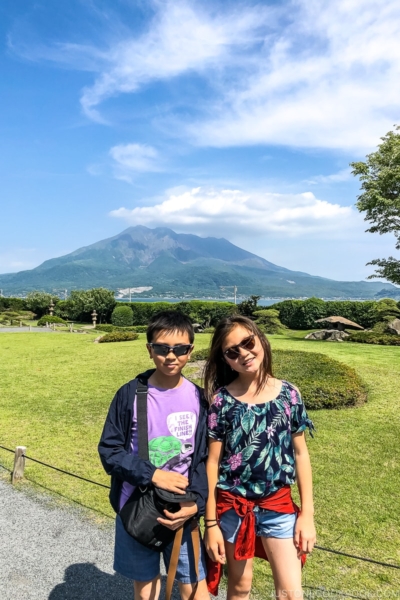




I’ve been to Arita, and it was great! I especially loved the Tozan Shrine and the shopping street, where the shops offer an amazing if pricy selection of ceramics. The day I was there some of the employees from local shops were holding relay races in the street with a ceramics theme: carrying water in a bowl while they raced, balancing a cup on their head while they ran, etc. I missed some on the other spots you listed – may have to go back! It’s a good place to stop for a few hours if you’re traveling by train between Fukuoka and Nagasaki.
Hi Nami! This was interesting. I have been to Arita, but visited different places. I went to the Gen-emon kiln outside Arita, where we watched artisans at work and we also had a look at the Fukagawa-seiji shop. A lot of the 200 pottery shops were closed when we were there (probably a good thing for my wallet!) I can only imagine what the festival is like! We did see the tombai walls and had lunch at the Porcelain Palace, which did seem a little weird, but the lunch was great! Thank you for the post!